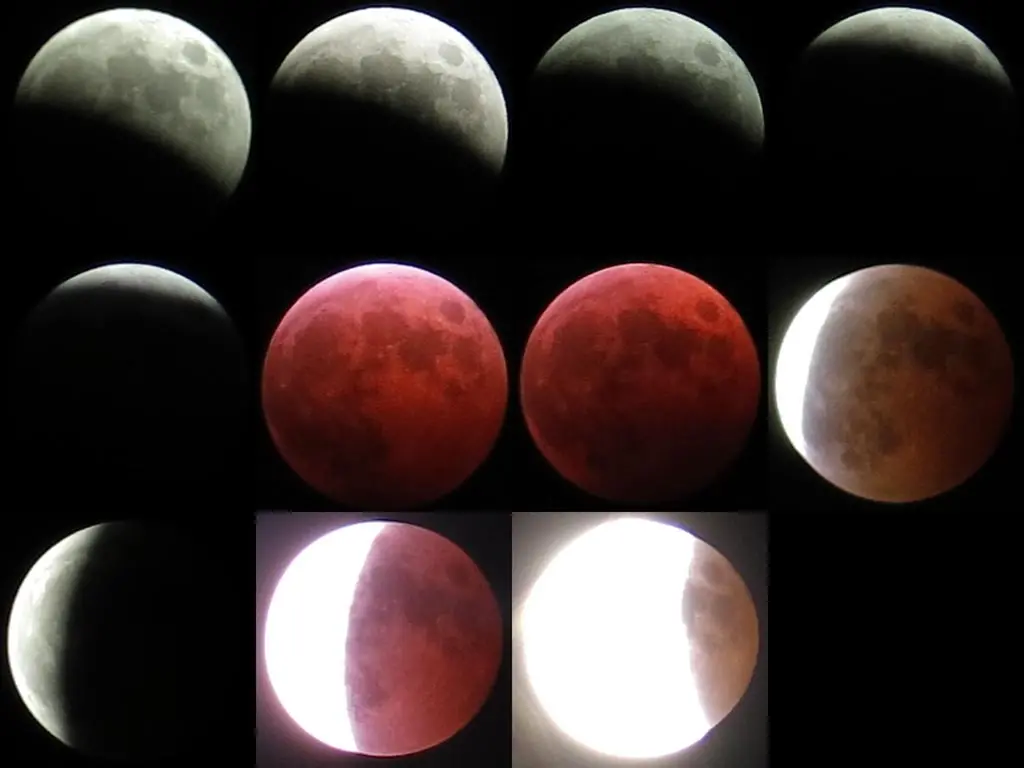On Monday, the harsh winds and rains of Typhoon #18 crossed over central Japan. Gifu had plenty of rain, and even canceled school in the morning. I think Shizuoka was hit the worst though. With every passing typhoon, the weather after tends to be completely flushed, as if nothing bad happened at all.
The skies became beautiful and clear. Over the eastern horizon, the moon rose and hung in the sky.
Throughout the night, the feint light brightened the darkness making it possible to still see everything.
Traditionally, the first full moon after September's Harvest Moon is known as the Hunter's Moon. During the harvest moon the remaining fields are collected. Now, it's the hunter's turn to gather food for the winter.
I observed the Harvest Moon last month: September 8th. I was lucky because this happened to be a Super Moon as well.
This month's full moon was also a coincidence of two celestial events. As the full Hunter's Moon continued into Wednesday night, a total lunar eclipse happened as well. When this occurs, the moon darkens, and turns red from the residual light. In effect, this creates a "blood" moon.
Wednesday evening's weather was even more clear than Tuesday. For the first time since Spring, you could completely view Norikura-dake, and the Kita Alps. You could even see the steam still rising from Ontake-yama's eruption. As I returned home from work, the moon was no where in the sky. At 5pm the previous night, the moon was a fixture in the sky. Now, nothing was in the sky. Meh, I ate dinner.
Next to Hida Takayama High School, on Nakayama (i think?) is a park that completely overlooks the town. Skypark スカイパーク has a clear view of the eastern sky as well, which is where the moon will rise. I went there at 5:30pm, and several other moon gazers had the same idea. Photographers lined the edge of the park looking at the town, and prepared for the moon. Several others continued to arrive.
Clouds had moved in, so Norikura was no longer visible. But, behind those clouds lay a massive light, that had begun to rise.

The moon climbed over the clouds, then hung in the sky over looking Takayama. The eclipse now approached. Here was the time table.
6:25pm - The earth began to eclipse the sun.
7:25pm - The total eclipse began.
8:25pm - The total eclipse was complete.
9:25pm - The earth no longer eclipsed the sun.

Some photos came out alright, but I'm still not quite sure how to correctly take these kind of photos. Some were blurred. Others were too exposed. And the ones that looked alright, still weren't 100% clear. That might be the limit of my camera, though.
Halfway through the eclipse, my camera ran out of batteries, and I returned home to recharge. Then, I climbed Kita-yama behind my house to finish watching the eclipse.
Hurrah, space!
Update: Ok, I think I figured out what I was doing wrong with my camera. When using the Program, and Custom modes on my camera, I can adjust the ISO and focus. But there are still some automatically adjusted settings in these modes. Manual mode gives full control over those remaining settings, which produces predictable, and repeatable results.

























